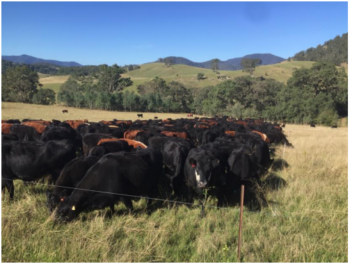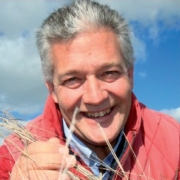GRAEME HAND – SAFE TO FAIL TRIALS
By Linda Poole, Regenerative Grazing Specialist & Mike Morris, Southwest Regional Office Director
Learning about low-risk experiments at NCAT’s Soil for Water program!
Growing up, we all negotiated countless challenges for which there was no recipe or rule book. We didn’t sit in class to learn to walk or attend a seminar to learn to not touch hot stoves. Luckily, we humans are pre-wired to learn by trial and error—otherwise we’d still all be crawling around on our bellies with fire-scarred hands.
At Soil for Water, we promote learning from peers and through low-risk experiments. Australian rancher Graeme Hand has a special twist on low-risk learning that he’s dubbed “safe to fail trials.” He consults internationally, and in July we were fortunate enough to have him speak to our Texas regenerative grazing working group via Zoom.

Graeme Hand Safe to Fail paddock example
Graeme basically advises trying new methods at very small scale and with minimal investment of labor or money. For grazing operations, he recommends stoutly fencing one small paddock, sized to hold the herd for a very brief time. Imagine your herd in a corral with enough room to stand comfortably and move about a bit, but pretty tightly packed—that’s the stock density Graeme used. After packing your stock into the paddock and holding them there a few hours to produce near-total trampling of vegetation, you move the animals out and observe how the vegetation responds during an extended resting period of no grazing for at least several months.
When does the grass come back? Is it denser or greener than before? Is the stand more diverse? Does water infiltrate quicker or slower than across the rest of the ranch?
Learning from this experiment in ultra-high-stock-density mob grazing requires comparing the trial paddock with business-as-usual on the rest of the ranch. Graeme shared some quick, effective monitoring techniques to measure landscape functions like stability, infiltration, and nutrient cycling. He told the group that long-term success is all about improving these functions and “minimizing losses rather than maximizing production.”
In the example that he shared, Graeme’s goal was to completely shift plant species composition by extreme disturbance – and it worked well for him! But that’s not the only way to use low risk experiments. For example, farmers could test small patches of cover crops, compare several hand-mixed concoctions of biostimulants, or try managing one small part of their farm organically. Graeme noted that we often get into pointless arguments and speculation about management practices that we could try at a very small scale. Why not just see if they work with our own eyes?
Several members of our Texas grazing group are planning to do safe to fail trials in the coming year. Is there a new technique or practice that you’d like to try in a low-risk experiment on your property? Get in touch with the friendly and knowledgeable team at Soil for Water if you’d like help designing a trial – we’d love to learn alongside you!
You can watch Graeme Hand explain more in detail how to conduct a Safe to Fail Trial on the NCATATTRA YouTube. You can also find Graeme at his website and Facebook page.



